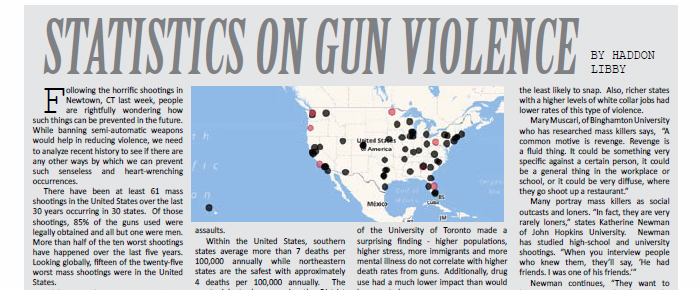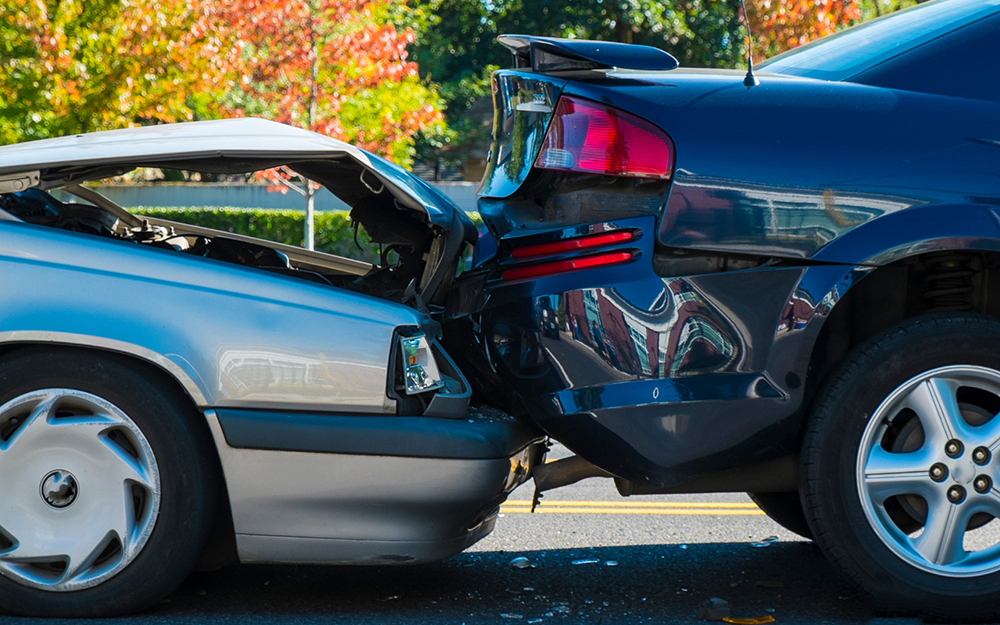
Following the horrific shootings in New Town, CT last week, people are rightfully wondering how such things can be prevented in the future. While banning semi-automatic weapons would help in reducing violence, we need to analyze recent history to see if there are any other ways by which we can prevent such senseless and heart-wrenching occurrences.
There have been at least 61 mass shootings in the United States over the last 30 years occurring in 30 states. Of those shootings, 85% of the guns used were legally obtained and all but one were men. More than half of the ten worst shootings have happened over the last five years. Looking globally, fifteen of the twenty-five worst mass shootings were in the United States.
While mass shootings are up, Kieran Healy of Duke University found that the overall death rate from assaults is down 40% from the early 1970s in the United States. Even so, the United States is still one of the most violent societies in the developed world with only Estonia or Mexico rivaling our death rates from assaults.
Within the United States, southern states average more than 7 deaths per 100,000 annually while northeastern states are the safest with approximately 4 deaths per 100,000 annually. The most violent place remains the District of Columbia at 21.2 per 100,000 with Louisiana, Mississippi, Alabama and Arkansas rounding out the top five. The least violent states were Iowa, Connecticut, Rhode Island and Massachusetts.
While states with stricter gun controls have fewer gun deaths, Richard Florida of the University of Toronto made a surprising finding – higher populations, higher stress, more immigrants and more mental illness do not correlate with higher death rates from guns. Additionally, drug use had a much lower impact than would be expected.
With those factors ruled out, what other factors can we try and correlate? People living in poverty, employed in blue collar jobs and high school students on school property are the most common factors in shootings while college graduates, people in creative jobs and happy people were the least likely to snap. Also, richer states with a higher levels of white collar jobs had lower rates of this type of violence.
Mary Muscari, of Binghamton University who has researched mass killers says, “A common motive is revenge. Revenge is a fluid thing. It could be something very specific against a certain person, it could be a general thing in the workplace or school, or it could be very diffuse, where they go shoot up a restaurant.”
Many portray mass killers as social outcasts and loners. “In fact, they are very rarely loners,” states Katherine Newman of John Hopkins University. Newman has studied high-school and university shootings. “When you interview people who knew them, they’ll say, ‘He had friends. I was one of his friends.’”
Newman continues, “They want to be seen as notorious, and unfortunately, there’s a lot of social reinforcement for the glamour of being notorious. They imagine how cool it will be when everybody knows their name. I know this sounds absurd, but in some ways, revulsion or notoriety is preferable from their point of view from anonymous and insignificant.”










































Comments are closed.